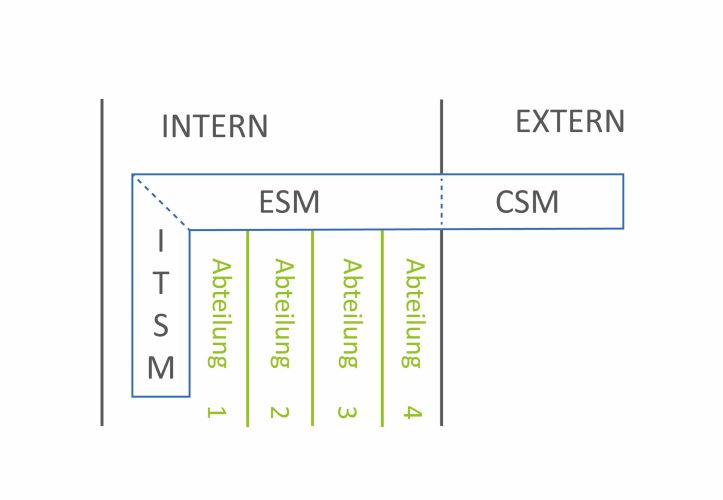ESM, ITSM & CSM
The definition chaos
01.02.2023 - Team BVQ°
Enterprise Service Management (ESM), IT Service Management (ITSM) and Customer Service Management (CSM) – these are hot topics in today’s IT landscape. Almost every IT decision-maker is talking about them, but everyone seems to mean something different. There are many definitions and even more interpretations. Here’s our attempt at a clarified and commented definition - and how we understand these terms.
The Ongoing Debate
The topics of ITSM, ESM and CSM are frequently and passionately discussed. It often becomes clear that there are differing views on their definitions and orientations. While ITSM benefits from a standardized vocabulary through the ITIL framework, this is not always sufficient and sometimes lacks detail or omits certain aspects entirely. Due to the absence of universally accepted definitions for ESM and CSM, we’ve decided to offer our own interpretation to bring more clarity. We based our work on the Wikipedia definition of IT Service Management, expanded it with additional aspects, and refined the wording. This definition then served as the foundation for developing the definitions of ESM and CSM. Below, you’ll find our perspective, including definitions and conclusions.
IT Service Management
IT Service Management refers to the entirety of measures, methods and technologies required to provide the best possible support for business processes (BPs) operated and owned by the IT department. ITSM supports the shift of IT toward internal customer and service orientation. The focus is on ensuring and monitoring business services - i.e., IT services consumable by internal customers. This enables continuous improvement in the efficiency, quality and cost-effectiveness of the IT department.
Enterprise Service Management
Enterprise Service Management refers to the entirety of measures, methods and technologies required to provide the best possible support for business processes (BPs) across the entire organization, operated and owned by various departments. ESM supports the shift from department-centric operations to a holistic internal customer and service orientation. The focus is on ensuring and monitoring all business services - i.e., services consumable by both internal and external customers. This enables continuous improvement in the efficiency, quality and cost-effectiveness of the entire organization.
Customer Service Management
Customer Service Management refers to the entirety of measures, methods and technologies required to provide the best possible support for business processes (BPs) that are explicitly consumed by, or directly impact, external customers. CSM supports the shift from an internal business focus to explicit customer orientation. This enables continuous improvement in service quality, customer satisfaction and customer loyalty.
How do they relate?
When viewed together, ITSM, ESM, and CSM form a complementary and expanding framework.
- ITSM is vertically integrated and focused on internal IT services.
- ESM expands this horizontally across departments, applying service and customer orientation throughout the organization.
- CSM extends the model further outward, applying similar principles to customer-facing processes and services.
Together, these three models can be rolled out both vertically and horizontally across an organization and integrated via process platforms.

Figure 1: Relationship between ESM, CSM and ITSM
Conclusion
The definitions and commentary presented here are not universally binding but serve as a foundation for shared understanding. They help facilitate meaningful discussions and collaboration within the Service Management community - and hopefully support your daily work as well.